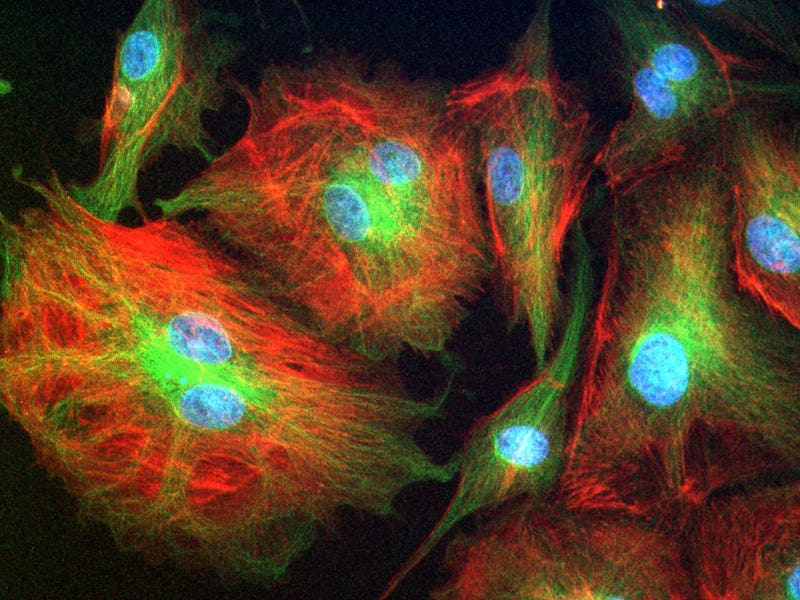Twitter for Cells Will Be Way More Useful Than Twitter for Humans
Cells, unlike your buddies, could create useful information by constantly live-tweeting.

The human impulse to live-blog is, at best, questionable, but it would be incredibly helpful for scientists if cells had a similarly autobiographical urge. If scientists could see what a cell was up to in the same way they get updates on their younger brothers’ Warriors fandom, they’d be able to monitor internal processes like infection and the onset of cancer like never before. And that’s exactly what Timothy Lu, Ph.D., at the Massachusetts Institute for Technology is attempting to develop using CRISPR.
Lu’s work, published this week in biorXiv, is essentially Twitter for cells: Using CRISPR, the biological engineer and computer scientist tweaked cells to write an autobiographical log of everything that happens to them in their genes. These events can, in theory, range from encounters with toxic substances to run-ins with bacteria or viruses; the researchers hope that their cellular logging tool, which the researchers called mSCRIBE, or Mammalian Synthetic Cellular Recorder Integrating Biological Events, can be further developed to surveil all of a cell’s activities.
To prove that his system works, Lu focused on monitoring inflammation, a well-characterized indicator of stress. His team engineered cells to live-log its run-ins with inflammation as they circulated within the body by inserting stretches of mutations in its DNA after each encounter, including details on the magnitude and duration of its encounters. Sure enough, when the cells were injected into mice, the ones that faced inflammation had “recorded” more events than those that didn’t.
The result is essentially a Twitter feed of the cell’s lifetime, with tweets appearing as stretches of random mutations embedded within the larger timeline of the cell’s actual DNA sequence, which is already known to researchers. Right now, the cells must still be fished out of the body before their feeds can be read, but the researchers hope that the tool could eventually surveil all of the activities and whereabouts of a cell in real time, perhaps even allowing “smart cells” — roving cellular spies — to be developed. If they succeed, they’ll have achieved the impossible — creating a Twitter feed that’s useful.